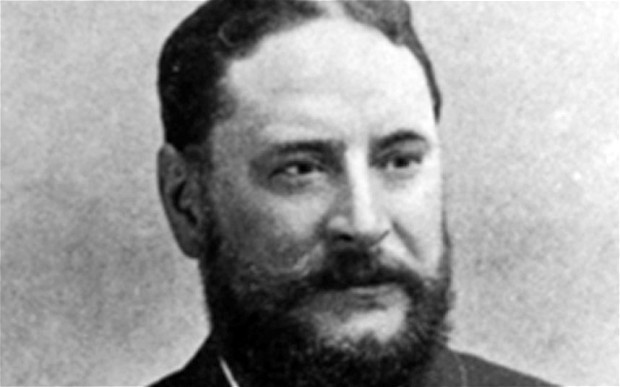Life in Manchester’s streets in the latter part of the 19th century was treacherous, with all manner of conmen, murderers and villains roaming the alleyways and ginnels. But one man, dubbed Manchester’s answer to Sherlock Holmes, waged war on the criminal underworld with a reported 1,225 arrests and 300 beer-houses closed down.
Jerome Caminada was born in 1844 on Peter Street, just across from where the luxury Radisson hotel stands today, in the very slums he would vow to protect. He was half-Irish and half-Italian and lived in total poverty. Life was hard for Caminada, not least because tragedy struck repeatedly during his childhood. He lost his father and four siblings, a heavy blow even in times of high infant mortality and low life expectancy. But Caminada wasn’t going to let this inauspicious start dictate his future. In 1868 he took an unusual step for an immigrant and joined the police force.
Now the extraordinary story of Caminada’s life is to set to reach a wider audience. Historian Angela Buckley has recently released a book on Caminada called The Real Sherlock Holmes. Northern Soul caught up with her to discuss the life and times of an unsung hero of Manchester’s past.
 “He had compassion,” says Buckley. “In many cases he would raise funds for victims or build monuments. There wasn’t much compassion from the police.”
“He had compassion,” says Buckley. “In many cases he would raise funds for victims or build monuments. There wasn’t much compassion from the police.”
The life of a policeman in Victorian England was very different to now. Unlike 21st century cops, they received little or no training. Instead, they were given a set of rules and sent straight out onto the street to meet a host of wonderfully named foes such as Cabbage Ann, Diamond Sam and Handsome Charlie.
But Caminada’s greatest foe was Bob Horridge, a career criminal who had experienced a remarkably similar upbringing to his police nemesis. Buckley says: “They could have been allies but took different paths”.
When Detective Caminada arrested Horridge for the first time, Horridge vowed he would get even. However, it was Horridge who would become the prey after firing a gun at police officers and fleeing to Liverpool. Caminada disguised himself as a labourer and pursued his quarry, resulting in a near fatal fight at the docks. Luckily Caminada got to his gun first and Horridge got life.
Caminada’s most high profile crime, which jettisoned him into middle class drawing rooms the length and breadth of the country, was the Manchester Cab Murder.
In a well-documented tale, John Fletcher was found murdered in the back of a cab in the centre of Manchester. It was initially thought to be alcohol poisoning but, with Caminada’s persistence and extraordinary powers of deduction, it was revealed to be a robbery involving drugging that went horribly wrong.
“The national psyche was terrified due to Jack the Ripper,” says Buckley. “And they built Caminada up. Confidence in the police was at a low and there was a huge pressure to convict.” Caminada solved the case in three weeks and the press had a field day.
Not one to let fame go to his head, Caminada took the opportunity to write the first of two memoirs in which he campaigned tirelessly for police reform and social reform, displaying a touching and deep understanding of what drove citizens to commit crimes. He felt that prison was ‘the best school of crime we possess’.
 Even though the criminal fraternity saw him as a hindrance, there was a grudging respect. In the case of a 16-year-old scuttler called Billy Willan, this was particularly true. Willan was sentenced to death for murder but he called for Caminada from his cell in Strangeways even though Caminada had nothing to do with the case. Caminada duly went and was so moved by the lad’s desperation he joined a campaign which succeeded in having the sentence changed from hanging to eight years in jail. In a bizarre twist of fate, Willan went on to marry Caminada’s niece and led a respectable life.
Even though the criminal fraternity saw him as a hindrance, there was a grudging respect. In the case of a 16-year-old scuttler called Billy Willan, this was particularly true. Willan was sentenced to death for murder but he called for Caminada from his cell in Strangeways even though Caminada had nothing to do with the case. Caminada duly went and was so moved by the lad’s desperation he joined a campaign which succeeded in having the sentence changed from hanging to eight years in jail. In a bizarre twist of fate, Willan went on to marry Caminada’s niece and led a respectable life.
When Caminada retired from the force in 1899, he tried his hand at politics with limited success and died in 1914 at the age of 70. He is buried in a family grave in Southern Cemetery, Manchester.











